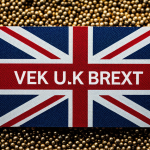The Role of Social Media in Brand Visibility
Social media brand visibility is increasingly crucial for UK businesses as platforms evolve. Historically, social media has transformed from simple communication channels to powerful marketing tools, enhancing both brand exposure and community engagement. Companies in the UK are leveraging these platforms to boost their presence and interact with their audience more effectively.
As UK businesses compete for brand visibility, social media platforms such as Facebook, Instagram, and Twitter play pivotal roles. These platforms serve as venues where brands can creatively showcase their products and values, engaging users through interactive content like polls, stories, and live videos. This increased interaction leads to higher awareness and reinforces brand identity among consumers.
This might interest you : How Can UK Businesses Enhance Their Online Presence Through Targeted Marketing Strategies?
Aligning the brand voice with social media marketing strategies is essential. A consistent and recognizable voice not only aids in capturing the audience’s attention but also builds trust and loyalty. Each platform may require a nuanced approach, but maintaining a coherent message across all channels ensures the brand remains memorable and relatable to its audience.
Ultimately, the strategic use of social media platforms elevates brand visibility, creating opportunities for UK businesses to expand their reach and influence in the digital marketplace.
In the same genre : How Can UK Businesses Transform Their Marketing Strategies to Engage New Audiences?
Key Statistics on Social Media Use in the UK
Social media has become a cornerstone of communication and marketing for UK businesses. A comprehensive understanding of social media statistics in the UK is pivotal for transforming user engagement into effective brand recognition strategies.
User Demographics and Habits
As of late 2023, approximately 80% of the UK population actively engages on social media platforms. This widespread usage spans various demographics, from teenagers to older adults, each with unique interactions and preferences. Platforms such as Facebook and Instagram lead in popularity, boasting over 50% engagement rates among adults. This highlights an essential target audience for brands aiming to increase their visibility.
Impact on Brand Visibility
User engagement significantly influences brand recognition. Studies show that brands with higher interaction rates experience up to a 70% increase in visibility and recall among consumers. Engaging content, such as videos and stories, is particularly effective, resulting in longer viewing times and more profound audience connection.
Comparative Analysis
The effectiveness of social media varies across business types in the UK. Retail and fashion sectors, for example, benefit immensely from visual platforms like Instagram, where aesthetic appeal boosts product attraction. Conversely, B2B companies may find LinkedIn’s network-oriented environment more conducive for brand visibility strategies. These insights assist businesses in selecting platforms aligned with their audience and industry specificity.
By leveraging these statistics, UK businesses can refine their social media strategies to capture and retain audience attention, ultimately enhancing brand visibility in a competitive digital landscape.
Social Media Strategies to Enhance Brand Visibility
When aiming to improve brand visibility in the UK, it is crucial for businesses to employ effective social media strategies. Tailoring these strategies to fit the local market dynamics can yield significant benefits. Central to these tactics is the production of high-quality content that speaks directly to the target audience’s interests and preferences.
To effectively boost visibility, brands must recognize the importance of content quality, consistency, and audience targeting. Consistent posting schedules and aligning content with audience preferences can greatly enhance brand perception. For UK businesses, embracing strategies like influencer marketing and user-generated content can foster authentic connections. By collaborating with influencers who resonate with their brand values, companies can reach broader audiences while maintaining credibility.
Moreover, capitalizing on user-generated content offers organic promotion opportunities. Encouraging customers to share their experiences on social media creates a genuine narrative around the brand, increasing trust and visibility. Through these strategic efforts, UK businesses can elevate their social media presence and achieve greater brand recognition in a competitive landscape.
Best Practices for Building Brand Visibility on Social Media
Building brand visibility on social media involves a set of strategic best practices tailored to resonate with UK audiences. UK businesses must develop engaging content that captivates and communicates effectively with their target demographics. Understanding audience preferences and trends is crucial in crafting content that stands out on crowded social media platforms.
Monitoring and analysing performance metrics provides invaluable insights into what strategies work best. Regularly reviewing engagement rates, such as likes, shares, and comments, helps businesses fine-tune their content to enhance visibility and resonance. Social media guidelines will aid in maintaining a consistent brand presence and ensure all content aligns with the brand’s voice and objectives.
Recommendations for leveraging tools and resources can significantly enhance social media marketing efforts. Utilising analytics tools like Google Analytics or platform-specific insights on Facebook and Instagram can furnish detailed reports, guiding strategic decisions. By implementing these best practices and continuously adapting to the social media landscape, UK businesses can effectively build and sustain robust brand visibility.
Case Studies of Successful Brand Visibility Through Social Media
Exploring real-world social media case studies provides invaluable insights into how UK businesses have successfully enhanced their brand visibility. These examples highlight innovative strategies and effective executions that UK companies have embraced to capture their audience’s attention.
ASOS, a prominent online fashion retailer, effectively uses Instagram and Twitter to engage with millions of followers. Their strategy focuses on a vibrant mix of visual content, including photoshoots, user-generated content, and interactive stories. By promoting an inclusive brand culture through hashtags like #AsSeenOnMe, ASOS taps into authentic customer relationships, drastically improving brand success stories and fostering customer loyalty.
Another notable example is Greggs, the beloved bakery chain. Known for their humorous and engaging content on Twitter, Greggs utilises quick wit and relatable posts to enhance brand personality. They align their brand voice with contemporary social media trends, engaging their audience while staying true to their brand values. This approach has resulted in increased brand visibility and widespread public adoration, proving that even traditional food businesses can thrive online.
The success of these UK businesses underscores the importance of understanding your audience and crafting a unique brand narrative. By analysing these brand success stories, other companies can adopt similar tactics—tailored to their own unique market presence—and achieve remarkable results in their social media endeavours.






